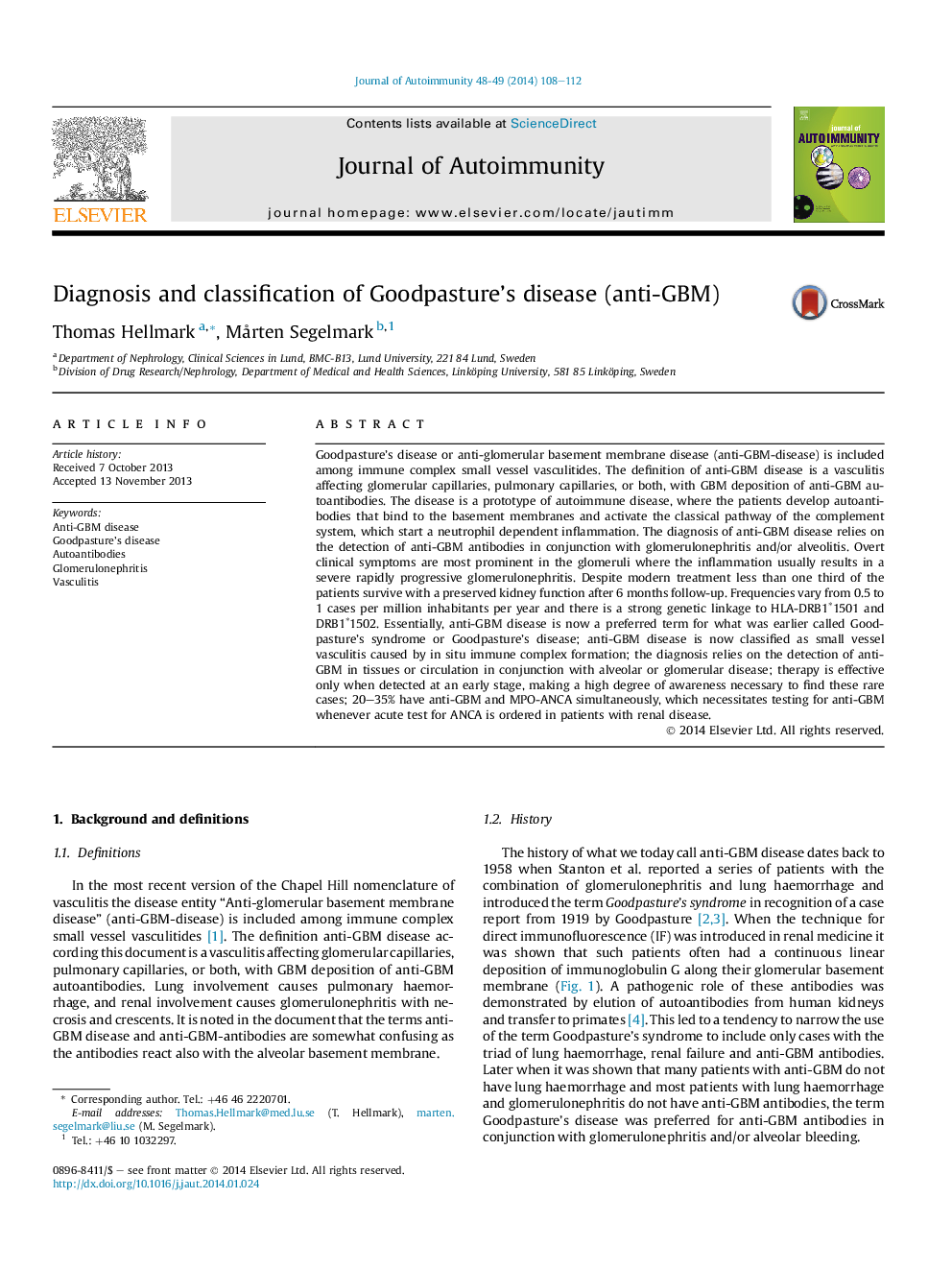| Article ID | Journal | Published Year | Pages | File Type |
|---|---|---|---|---|
| 3367847 | Journal of Autoimmunity | 2014 | 5 Pages |
Goodpasture's disease or anti-glomerular basement membrane disease (anti-GBM-disease) is included among immune complex small vessel vasculitides. The definition of anti-GBM disease is a vasculitis affecting glomerular capillaries, pulmonary capillaries, or both, with GBM deposition of anti-GBM autoantibodies. The disease is a prototype of autoimmune disease, where the patients develop autoantibodies that bind to the basement membranes and activate the classical pathway of the complement system, which start a neutrophil dependent inflammation. The diagnosis of anti-GBM disease relies on the detection of anti-GBM antibodies in conjunction with glomerulonephritis and/or alveolitis. Overt clinical symptoms are most prominent in the glomeruli where the inflammation usually results in a severe rapidly progressive glomerulonephritis. Despite modern treatment less than one third of the patients survive with a preserved kidney function after 6 months follow-up. Frequencies vary from 0.5 to 1 cases per million inhabitants per year and there is a strong genetic linkage to HLA-DRB1∗1501 and DRB1∗1502. Essentially, anti-GBM disease is now a preferred term for what was earlier called Goodpasture's syndrome or Goodpasture's disease; anti-GBM disease is now classified as small vessel vasculitis caused by in situ immune complex formation; the diagnosis relies on the detection of anti-GBM in tissues or circulation in conjunction with alveolar or glomerular disease; therapy is effective only when detected at an early stage, making a high degree of awareness necessary to find these rare cases; 20–35% have anti-GBM and MPO-ANCA simultaneously, which necessitates testing for anti-GBM whenever acute test for ANCA is ordered in patients with renal disease.
